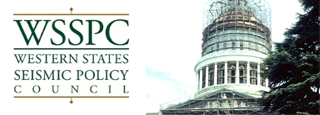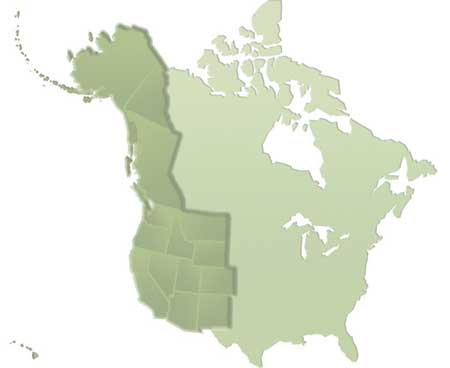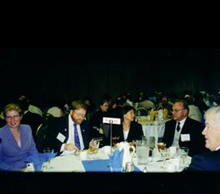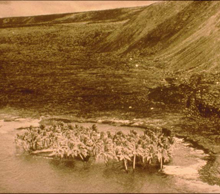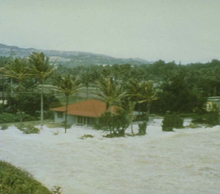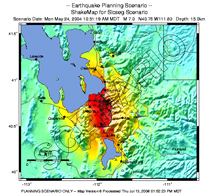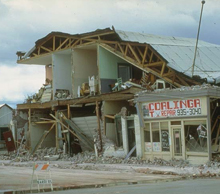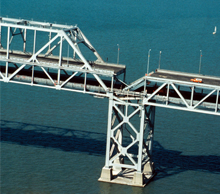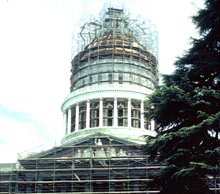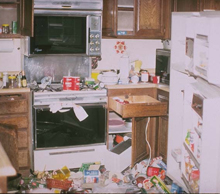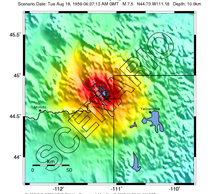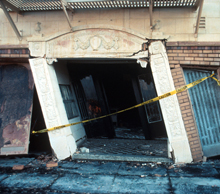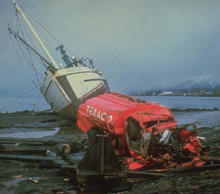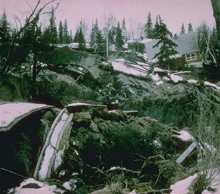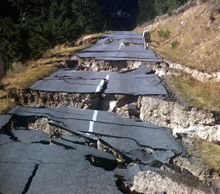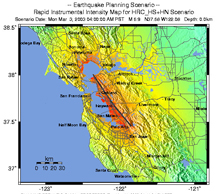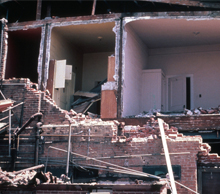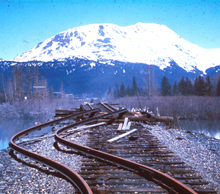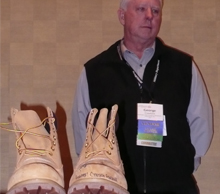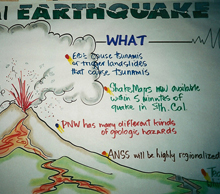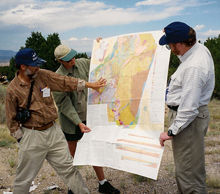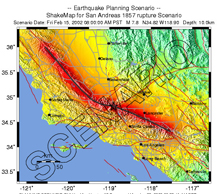Description
On July 10, 1958, a magnitude 7.7 earthquake occurred on the Fairweather Fault in southeast Alaska. It caused significant geologic changes in the region, including areas that experienced uplift and subsidence. It also caused a rockfall in Lituya Bay that generated a wave with a maximum height of 1,720 feet – the world’s largest recorded tsunami.
Impact
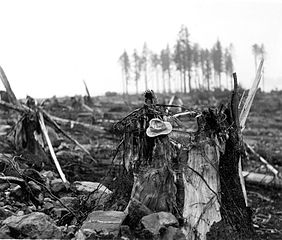 A total of five people were killed in the event: three people died on Khantaak Island at the mouth of Yakutat Bay when the beach they were standing on subsided 100 feet below sea level; the other two died when their boat was sunk by the tsunami at Lituya Bay. Two other boats also were anchored in the bay that night; those four people managed to ride out the wave. Two were rescued from a dinghy after their boat sank, the others managed to pilot out of the bay on their own power, but at great risk, as the water continued to swirl unpredictably, and was littered with millions of tree trunks that had been ripped from the banks. Don Miller, a USGS
A total of five people were killed in the event: three people died on Khantaak Island at the mouth of Yakutat Bay when the beach they were standing on subsided 100 feet below sea level; the other two died when their boat was sunk by the tsunami at Lituya Bay. Two other boats also were anchored in the bay that night; those four people managed to ride out the wave. Two were rescued from a dinghy after their boat sank, the others managed to pilot out of the bay on their own power, but at great risk, as the water continued to swirl unpredictably, and was littered with millions of tree trunks that had been ripped from the banks. Don Miller, a USGS
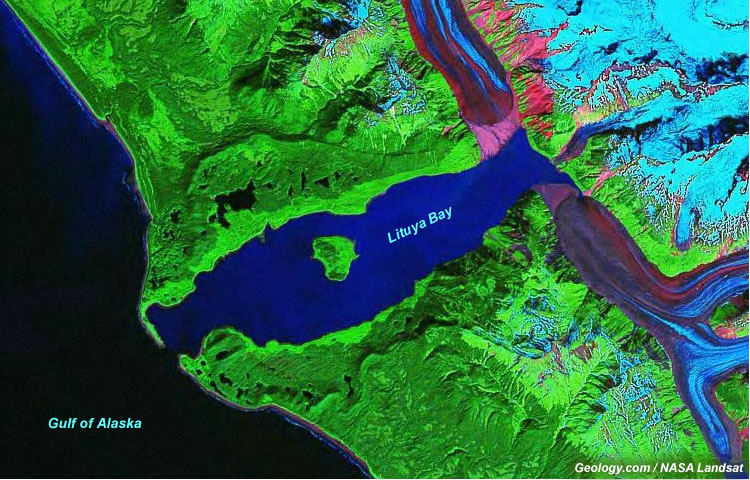
Above: The stump of a living tree broken off by the wave at the mouth of Lituya Bay, about 7 miles from where the wave originated. The hat brim is 12 inches in diameter. (Image: D.J. Miller, USGS/Wikimedia Commons)
Left: Decades after the tsunami, damage to the edges of the bay (the light green areas) can clearly be seen on this Landsat image. (Image: Geology.com/NASA Landsat)
geologist, had already documented a total of three other major tsunamis at this location; he flew out to the site the next day, and although he was able to take photos from the air, it was another three weeks before it was safe enough to land to document the destruction. He found that all evidence of previous tsunamis had been destroyed by this one.
Scientists were puzzled for some time by the sheer size of the wave, because they could not identify a mechanism that could have created such a massive reaction. Ultimately, it was discovered that a piece of rock, 2,400 feet by 3,000 feet, and 300 feet thick, had dislodged from the face of the northern wall of the inlet, and fallen 2,000 feet into the bay. In some respects, it created a similar reaction to that which would have occurred if an asteroid had fallen into the water.
Lessons Learned
Unfortunately, there was nothing anyone could have done to prevent any of the five deaths. The earthquake was so strong, and the tsunami came so quickly, that there was not time to get to a safe place. It does, however, highlight the importance of documenting such events for posterity, and to consider such extreme events when making development decisions for coastal areas in areas with high seismicity or vulnerability to tsunamis.
References and Additional Resources
USC Tsunami Research Group: 1958 Lituya Bay Tsunami
http://www.usc.edu/dept/tsunamis/alaska/1958/webpages/index.html
Disaster Pages of Dr. George PC: “The Mega-Tsunami of July 9, 1958 in Lituya Bay, Alaska”
http://www.drgeorgepc.com/Tsunami1958LituyaB.html
The Giant Waves of Lituya Bay
http://www.gi.alaska.edu/AlaskaScienceForum/article/giant-waves-lituya-bay
BBC Nature: Mega Tsunami – Alaskan Super Wave – Amazing Survival
http://www.youtube.com/watch?v=yN6EgMMrhdI
